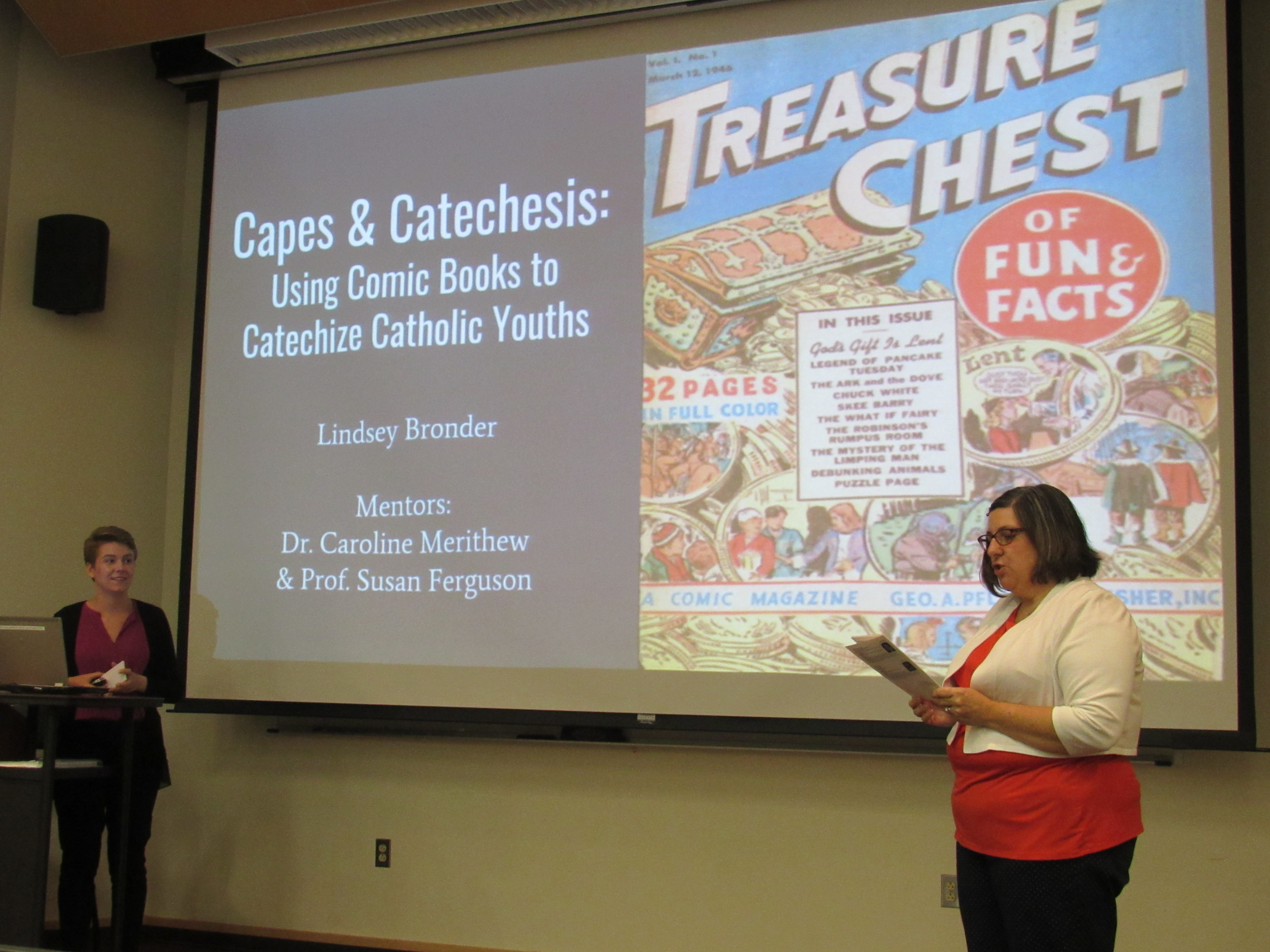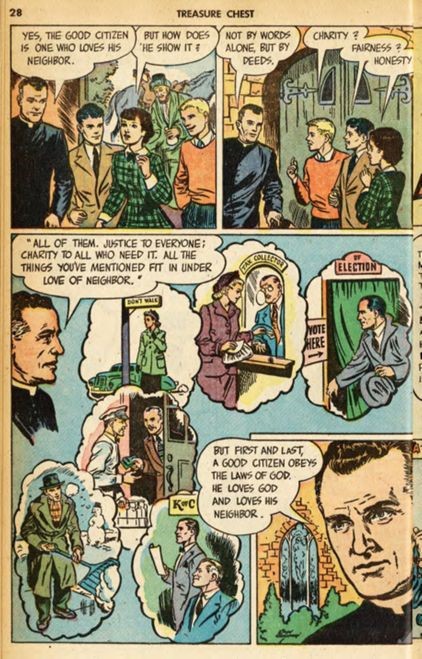Center for Catholic Education at UD

Capes and Catechesis
By Lindsey Bronder
On September 25, we celebrate one of America’s most famous literary genres: the comic book. Since the 1930s, comic books starring superheroes have been popular among youth in America. Comic books are an important part of American culture and history, especially for Catholic Americans.
After World War II, there was a growing fear of American Catholic youth falling away or losing their faith and morals as they became increasingly more part of and surrounded by secular society. There were concerns regarding the morals, especially violence, presented in comic books and the potentially negative impact on young readers. In response, George Pflaum of Dayton, Ohio, created the Treasure Chest of Fun and Fact (1946-1973) comic series to promote justice, American patriotism, and Roman Catholic teachings. In light of anti-Catholic sentiments of the time, the main theme of Treasure Chest was American citizenship and emphasized the notion that children could be good Catholic American citizens.
 Catholic University of America Digital Collections
Catholic University of America Digital Collections
Treasure Chest encouraged readers to be good Catholic American citizens by developing good morals and serving others in their community. In a story called “It Happens Here”, students in a Civics club search for an answer to the question of “Who is a good citizen?”. In an interview with the mayor, the students are told that “A good citizen is someone who obeys the laws, pays taxes, and votes at all elections.” Finding this answer lacking, the students ask the editor of the newspaper, who answers that a good citizen “pays his bills, sweeps the snow from his sidewalk, and joins clubs that help the community.” While they found merit in both of these answers, the students still believed something to be missing. The students then consult their priest, who tells them that the missing link is so simple that they have overlooked it: love, also known as charity. Pointing to a painting of the story of the Good Samaritan, the priest defines citizenship in terms of loving one’s neighbor “not by words alone, but by deeds.” The imagery of the Good Samaritan reaffirms this message and reminds readers of the importance of showing mercy and kindness to all, which is the essence of all the other actions described as good citizenship. The priest’s final message is that “first and last, a good citizen obeys the laws of God. He loves God and loves his neighbor.” According to historian Dr. Anne Blankenship, this suggests that Catholics “hold the key to a more perfect America” in their focus on charity and that this qualifies Catholics as good American citizens.
Despite not being the first of its kind, TC is arguably one of the most influential and successful Catholic comic series. Having run the longest and produced more issues than other comics, it seems to be the leading example of how comic books have been used in the past to catechize American Catholic youth. The Church still uses visuals like comics and coloring books to teach children today. Consider incorporating this genre with such a rich history into your classroom today!
The University of Dayton Roesch Library is blessed to have a complete collection of Treasure Chest as part of the U.S. Special Catholic Collection. If you want to read or learn more about Treasure Chest, be sure to visit!
Note: Adapted from Lindsey Bronder’s Berry Summer Thesis Institute paper called “Capes and Catechesis: Using Comic Books to Catechize Catholic Youths.”
